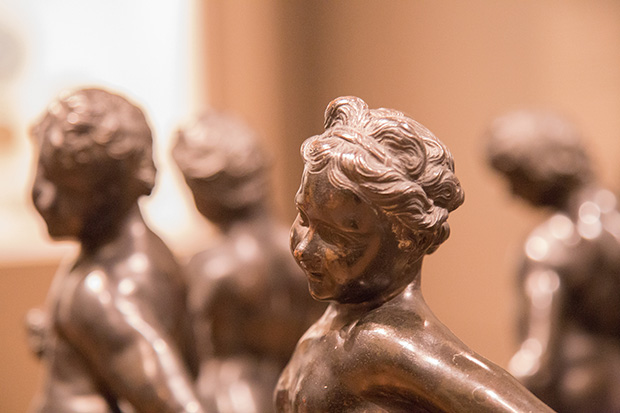What makes Melbourne the cultural capital of Australia?
MELBOURNE’s arts and culture scene trumps any other city in Australia with some of the best galleries and exhibitions in the entire country. Trinity College Foundation Studies students Vicky Jiahong Huang and Prince Yunyi Ling have the story.
There’s a lot to like about Melbourne. Its diverse food culture, the relative ease and convenience of navigating its city… But there’s another quality that makes Melbourne one of the most unique cities in Australia – its culture.
As the cultural capital of Australia, Melbourne is home to some of best galleries and exhibitions in the country. Never mind that the city seemingly has a festival every week; its landmark cultural institutions have housed some amazing installations and pieces over the years which have helped the city maintain its arts and culture prestige.
Below is a list of Melbourne’s iconic cultural institutions and their significance to the city’s arts and culture scene.
NGV (National Gallery of Victoria)
The NGV is the oldest and most visited gallery in Australia. It exhibits more than 73,000 art pieces from both international and local talents and over the years has hosted major international exhibitions from the historic to the contemporary.
The building that houses these amazing art pieces is just as much of a marvel as well as the NGV’s building is an architectural delight. When you step into the back entrance of the international building, the ceiling of colourful stained glass that greets you can be quite a sight both from underneath and on the first floor.
General entrance into the NGV is free, which makes spending a day at the gallery all the more rich.
Do note that the NGV is comprised of two magnificent buildings—NGV International (located at 180 St Kilda Rd) which exhibits international collections, and NGV Australia (located near Federation Square) that show cases more Australian works.
Melbourne Museum
As the biggest museum in the Southern Hemisphere, the Melbourne Museum is a key attraction which students should not miss. Located at 11 Nicholson St, Carlton, the museum prides itself with seven main galleries which are distributed across three levels contain content on forestry, science and life, the story of Melbourne, Aboriginal culture and a children’s gallery.
Thousands of pieces are featured at the museum including bugs, dinosaurs, fossils, animals, human biology and many more.
If you’re feeling a bit tired after all the walking, Melbourne Museum is also home to one of the world’s largest IMAX screens so why not catch a film afterwards?
Currently, the Melbourne Museum is displaying the Jurassic World exhibition, based on the film of the same name.
ACMI (Australian Centre for the Moving Image)
A popular landmark that stands within Federation Square, ACMI is a site that most Melbourne residents will already be familiar with. The 70-year old facility, which started out as the State Film Centre in 1946, the institution explores and promotes the moving image in all its forms – film, television and digital culture.
Additionally, it hosts several different exhibitions related to moving image culture, which includes its permanent exhibition Screen Worlds – which gives visitors the chance to learn more about the history of the moving image. Additionally, a screening room is available for those who just want to sit back and watch select films and television shows for free.
ACMI’s major exhibition at the moment is SCORSESE, which celebrates the work of American filmmaker, Martin Scorsese (known for films such as Goodfellas and The Wolf of Wall Street)
Royal Exhibition Building
As one of the oldest remaining exhibition pavilions in the world, the Royal Exhibition Building is officially listed as a World Heritage site, and continues to host fairs, conventions and events all year round. Located right next to the Melbourne Museum, the Royal Exhibition Building was built originally for the first of two international fairs hosted by Melbourne.
On May 1, 1901, the initial Commonwealth Parliament was held here — an important event in Australian history — which was commemorated in 2001 as part of the centenary of the Federation of Australia.
Today, with its meticulously restored interior, expansive galleries and soaring dome, the Great Hall offers an impressive setting for trade shows, fairs and community events.
This story was produced by Media and Communication students at Trinity College Foundation Studies as part of Meld’s community newsroom collaboration. Education institutions, student clubs/societies and community groups interested in being involved can get in touch with us via meld@meldmagazine.com.au.




